Organic sitelinks, also known as ‘Google sitelinks’, are a SERP feature that drives higher click-through rates (CTR), builds credibility and trust in your brand, and encourages your visitors to go deeper into your website.
But what are sitelinks, and how do you get them?
What Are Organic Sitelinks?
Sitelinks are links to other pages on your website that appear underneath the main link in the search results.
There are three main types of organic sitelinks:
Home page sitelinks
These are links to the main categories on your site. Home page sitelinks only appear when your website ranks in the number #1 position in a branded search.
In other words, if you type the name of your website into Google and your site is listed in the #1 position, you will see organic sitelinks beneath the main link:
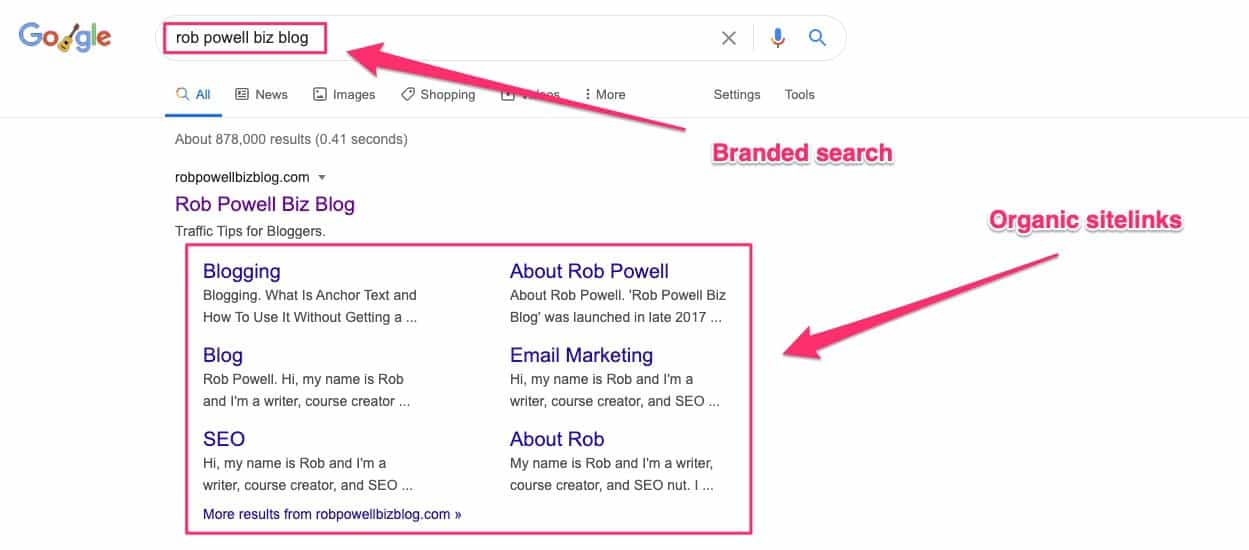
When home page sitelinks appear, these are usually six of them.
If the name of your website is generic, the chances are your website will not appear in position #1 for a search on the name of your website. And that means your site would not get sitelinks for a branded search.
For example, the site www.realestateagent.com does not appear at position #1 when you do a search for ‘real estate agent’ (the name of their website). Instead, Google lists the local real estate agents nearest to where the searcher is located:
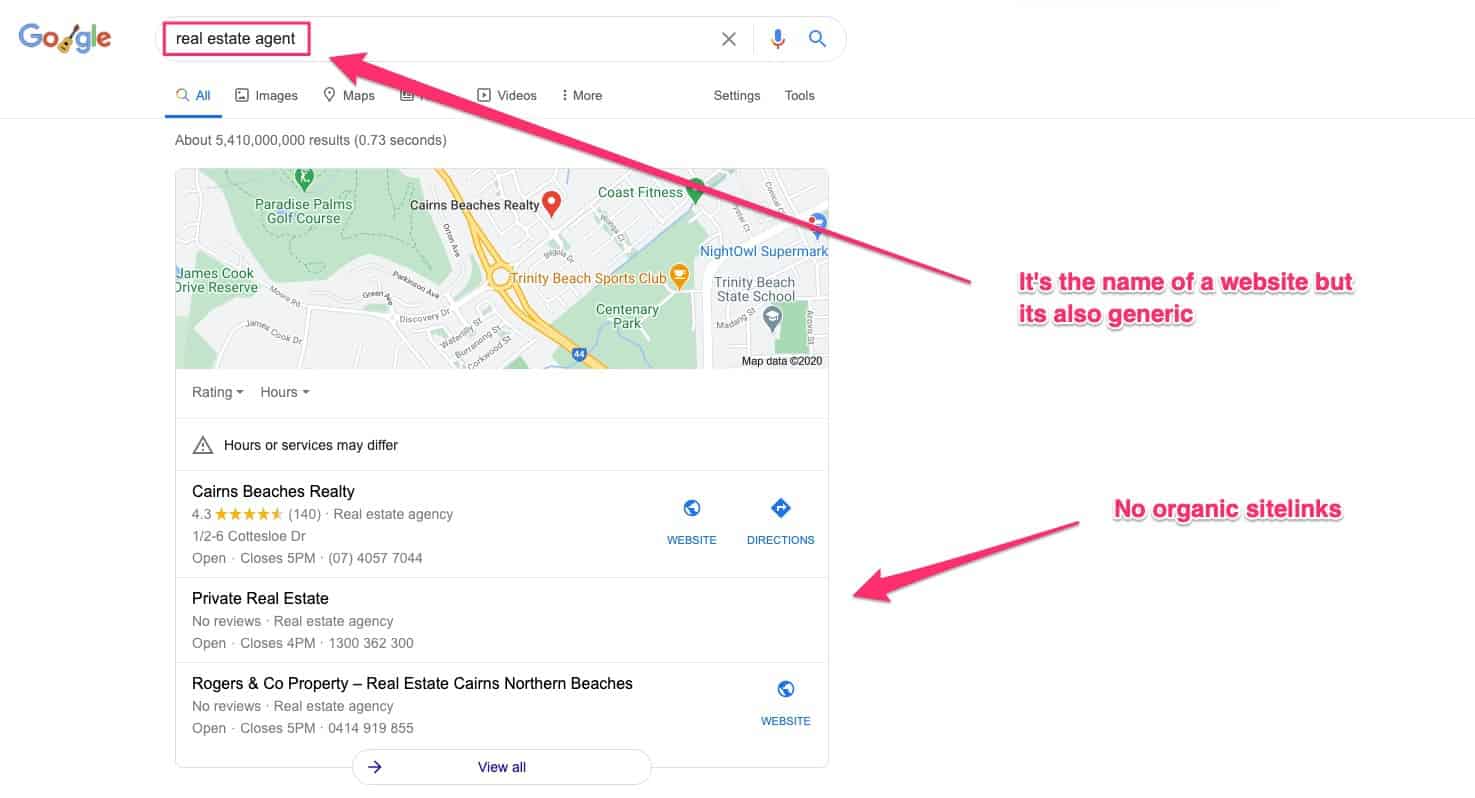
Sitelinks with a search box
Sometimes, a sitelink search box will be included in the SERP snippet:
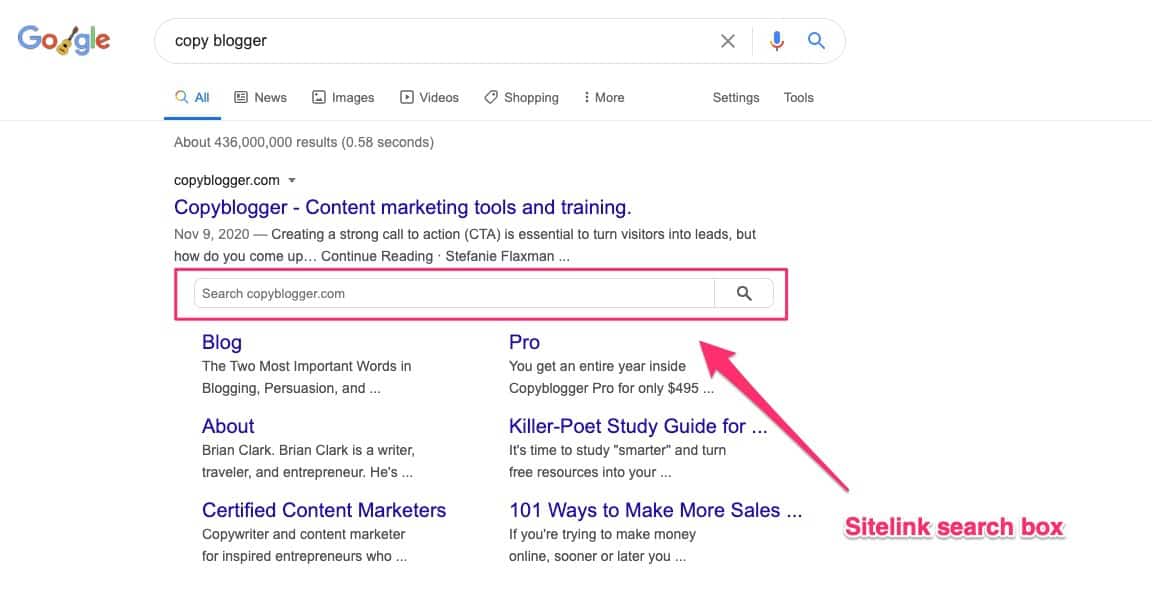
Sitelink search boxes only appear when the website itself has a search box. A sitelink search box allows the user to search the site directly from the search results.
Individual page sitelinks
Organic sitelinks can also appear under the SERP snippet for an individual page:
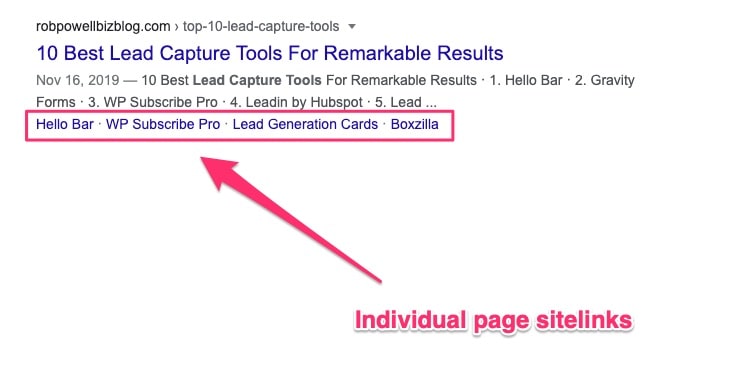
In this case, Google has taken the list of tools reviewed in the article and presented some of them as sitelinks.
Article sitelinks often appear when you have a Table of Contents, consisting of H2 headings that link internally to different sections of the article.
Benefits of Organic Sitelinks
The three main benefits from having organic sitelinks are:
Build trust and credibility
The Google algorithm gives sitelinks when it’s made an assessment that those links will help searchers access and understand the site. In a sense, then, sitelinks are a signal to your searchers that your site has established a degree of trust and credibility with Google. And that in turn builds credibility with your online audience.
Increase Click-Through Rate (CTR)
As you can see from the images above, home page sitelinks result in a search snippet that occupies a lot of valuable real estate. And that means people are much more likely to click on your SERP snippet.
Even individual page sitelinks create a SERP snippet that attracts more attention than a normal snippet.
So sitelinks result in higher click-through rates. In fact, one study showed that sitelinks increased CTR by almost 64%.
Take your visitors deeper
People visiting your home page from the search results won’t necessarily click on any of the links to go deeper into your site. But when they see an array of sitelinks in your SERP snippet, it’s much more likely that they will click through to other parts of your website.
How To Get Organic Sitelinks (7 Tips)
The first thing to note is that you can’t actually request sitelinks from Google. There’s no switch you can turn on that will automatically give you sitelinks. The algorithm decides which search results will receive sitelinks.
But you can do a number of things that increase the likelihood that you’ll get sitelinks:
#1. Unique site name
Make sure that your site is the only site that ranks for a branded search for your site.
The reason for this is that only the #1 result in a branded search will be given home page sitelinks.
So if your website is called ‘Best Home Theatre’, you wouldn’t get home page sitelinks because that’s a generic search term.
#2. Structured data markup
Add structured data markup to your website. This is not a guarantee that you will get sitelinks but it makes it much more likely.
Structured data markup helps Google understand your content better. And that makes it more likely that the algorithm will use sitelinks in your SERP snippets.
There are many Structured Data Markup plugins, but the one I use and recommend is Schema Pro (aff).
#3. Well organized site structure
Make sure you have a clear and well organized site structure. The best site structure for informational websites, such as blogs, is a three-tier structure that looks like this:
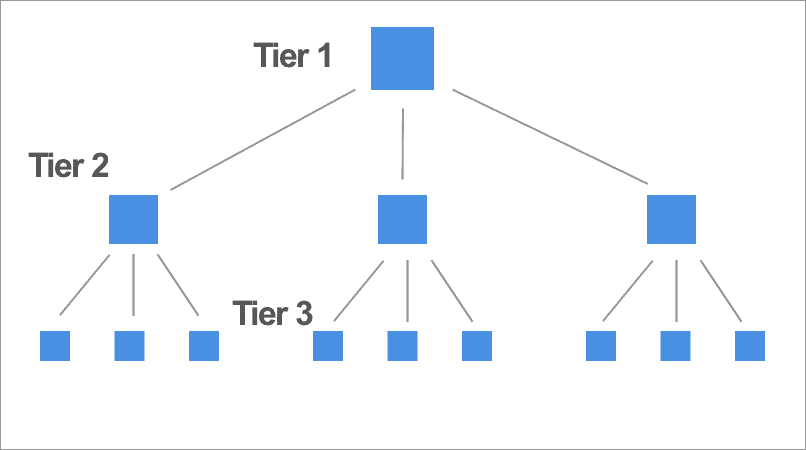
#4. Sitemap in GSC
Add a sitemap XML file to your Google Search Console account. This will make it easier for Google to understand which are your most important links.
You can add a sitemap using the free version of Yoast SEO. In Yoast, go to ‘Features’ and make sure the XML sitemap option is turned on, and then click on the question mark icon:
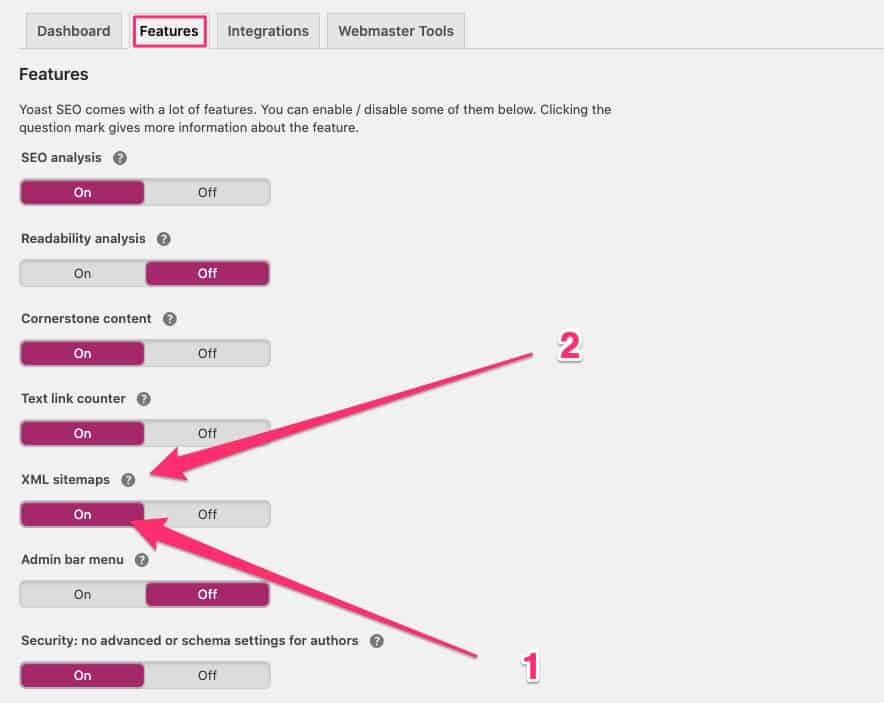
Next, click on the link that says ‘See the XML sitemap’:
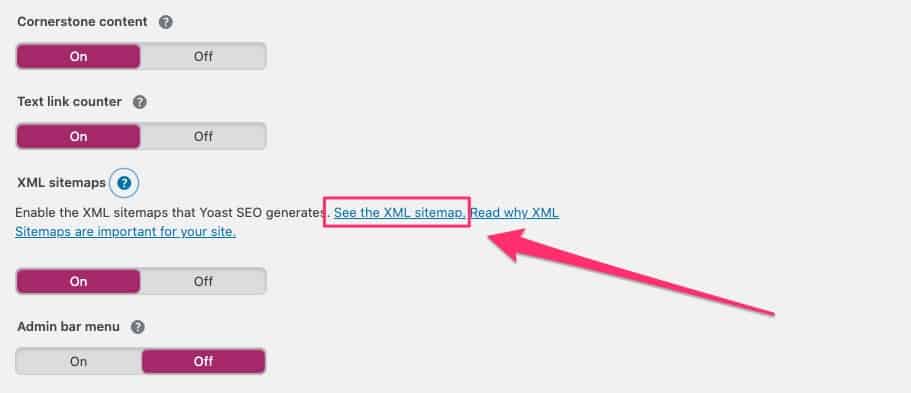
On the next screen copy the URL of the sitemap, then head over to your Google Search Console account, click on the ‘Sitemap’ option in the left menu and then submit the URL of your sitemap:
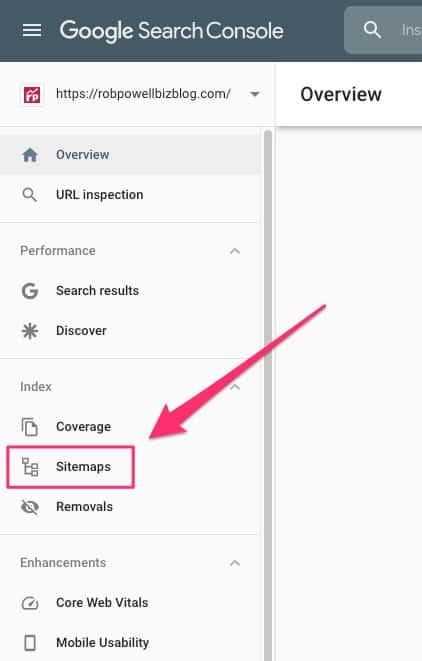
#5. Internal links
Add internal links every time you publish a new blog post. The more internal links you have, the better Google will understand which are the key pages on your site (assuming that your internal links are links to relevant pages).
Internal linking is a time-consuming task and unfortunately, most bloggers never get around to doing it. That’s why I recommend the Link Whisper Internal Linking plugin (aff). It’s a super useful plugin that takes care of internal linking in a few seconds.
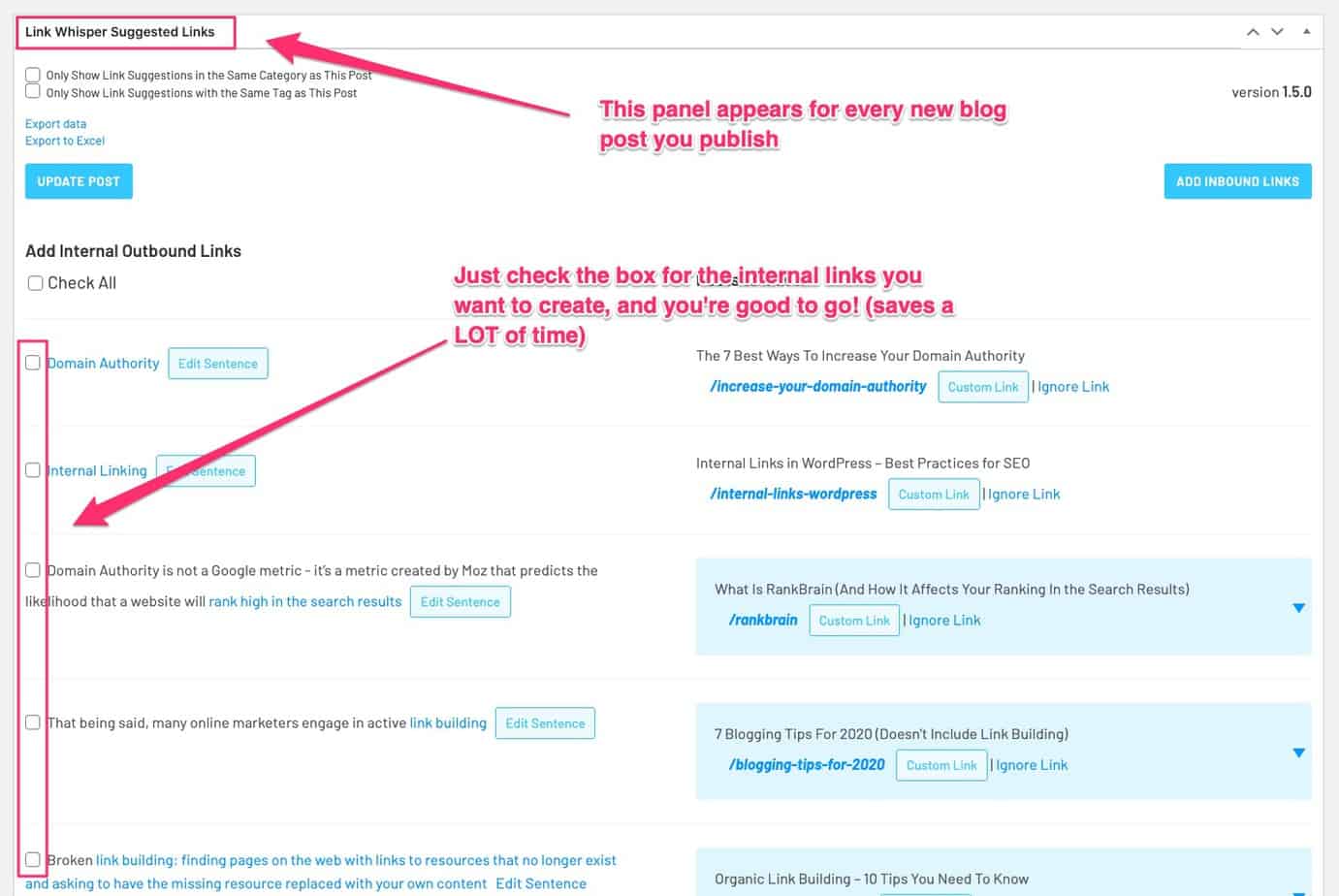
#6. Table of Contents (ToC)
Add a Table of Contents to each article that you publish.
A Table of Contents widget will take your H2 and H3 headers and turn them into clickable links within the Table of Contents.
On my own site, the blog posts that get sitelinks in the search results are the ones that have a clickable Table of Contents.
#7. Links from home page
Make sure your most important website pages are linked to from your home page.
Also, make sure your key pages are included in your main navigation: home page sitelinks are very often taken from your primary navigation.
Conclusion
Organic sitelinks are inserted into SERP snippets by the Google algorithm and are beyond your direct control. You can neither add them nor remove them.
However, there are things you can do to increase the likelihood of getting sitelinks:
- Make sure your site name is unique and not a generic term
- Add structured data markup to your website
- Have a clear, well organized site structure
- Add a sitemap XML file to your Google Search Console account
- Add internal links every time you publish a new blog post
- Use page titles that accurately describe the content of your pages
- Add a Table of Contents to each article that you publish
- Make sure your most important website pages are linked to from your home page